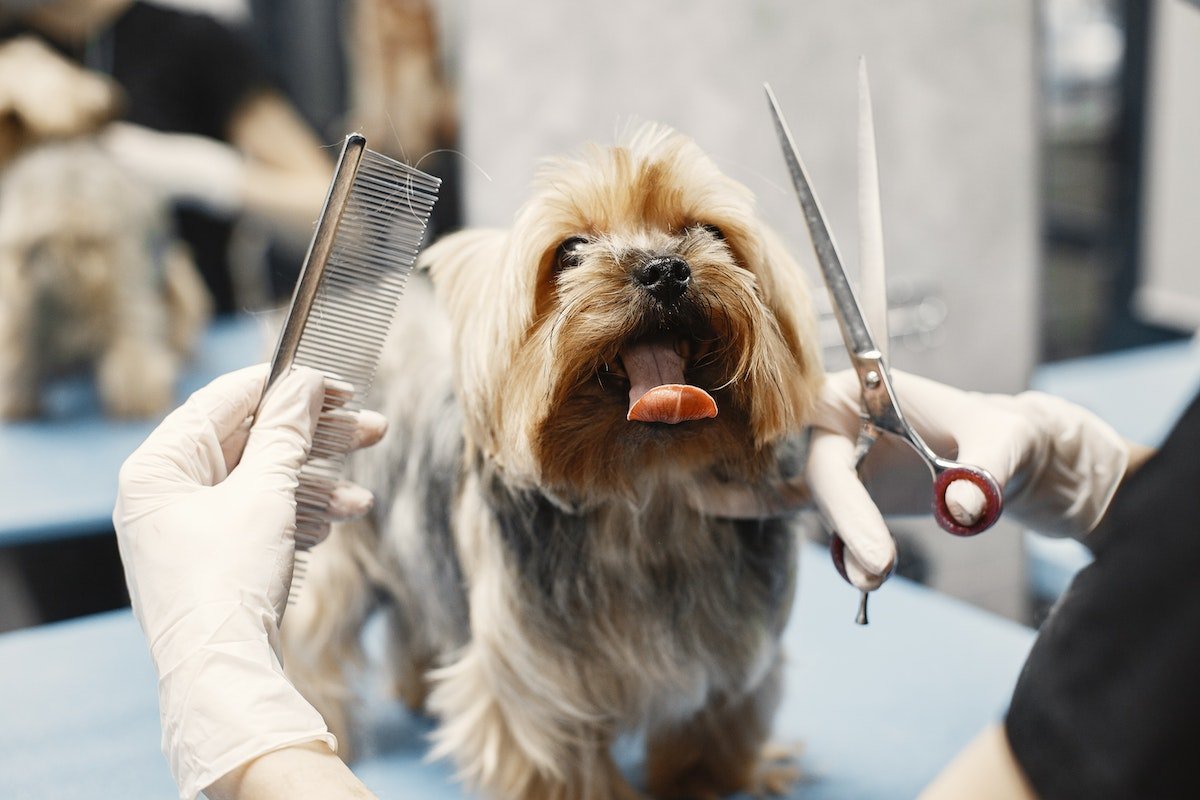Many dogs find going to the groomer uncomfortable and anxiety-inducing. Strange noises, unexpected environments, and being handled by strangers can all cause worry and unease. As responsible pet owners, we must ensure that our canine companions have a quiet and comfortable grooming experience.
This post will go over expert ideas and practical tips for helping anxious dogs overcome grooming anxiety. From understanding the underlying reasons for fear to implementing effective coping mechanisms, we will look at evidence-based methods for creating a more relaxing grooming experience for both dogs and their owners. By using these approaches, we can give our pets the confidence and peace of mind they need before going to the groomer.
Understanding the Triggers

Anxiety in dogs during grooming sessions is a prevalent issue that can cause distress for both the pet and the groomer. To effectively manage and alleviate this anxiety, it is crucial to identify the underlying triggers that contribute to it. Common causes of anxiety in dog grooming settings include:
Unfamiliar Environment
The grooming salon, with its unfamiliar sights, sounds, and smells, can be overwhelming for dogs. The presence of strangers, the noise of clippers and dryers, and the confinement of being restrained on a grooming table can trigger feelings of unease.
Past Negative Experiences
Previous negative grooming experiences, such as rough handling or painful procedures, can create lasting associations of fear and anxiety with grooming. Even if the current groomer is gentle and patient, the dog may still exhibit anxious behaviors due to these past experiences.
Breed Predisposition

Certain dog breeds, such as those with sensitive temperaments or a history of anxiety, may be more prone to experiencing anxiety during grooming. For example, breeds like Bulldogs, Pugs, and Pekingese often have difficulty breathing due to their flat faces, which can make them anxious when being handled around their head and neck.
Health Conditions
Underlying health issues, such as skin allergies, joint pain, or dental problems, can cause discomfort and pain during grooming. This discomfort can lead to anxiety and resistance during the grooming process.
Owner Anxiety
The anxiety of the dog’s owner can also contribute to the dog’s anxiety during grooming. If the owner is anxious or apprehensive about the grooming process, the dog may sense this and become anxious as well.
Creating a Calming Environment
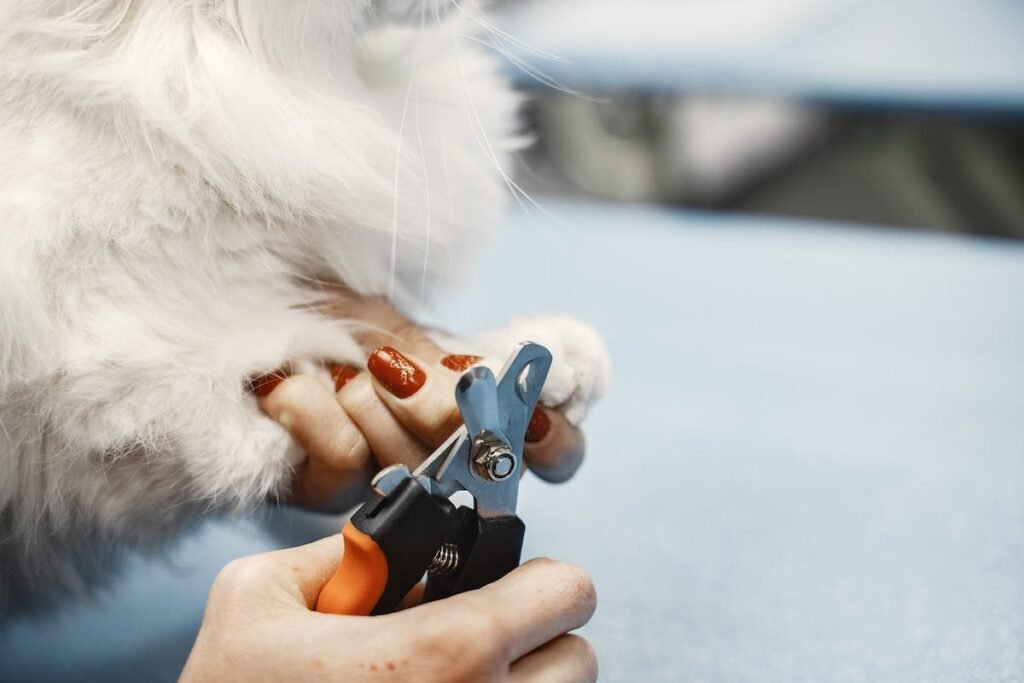
Creating a relaxing atmosphere during dog grooming is critical for decreasing stress and encouraging relaxation in both the dog and the groomer. Have a specific space set aside for grooming that is noise- and distraction-free.
Use diffusers or sprays to release calming scents like lavender or chamomile. Soft, relaxing music might help to create a peaceful mood. Make sure the grooming table is at a comfortable height for the dog, and use non-slip materials to prevent slippage. Provide plenty of snacks and praise throughout the session to promote good behavior.
Maintain a gentle hand and avoid making quick moves that may surprise the dog. If the dog shows signs of nervousness, such as panting, whimpering, or shivering, take breaks and provide reassurance.
Building a Positive Association
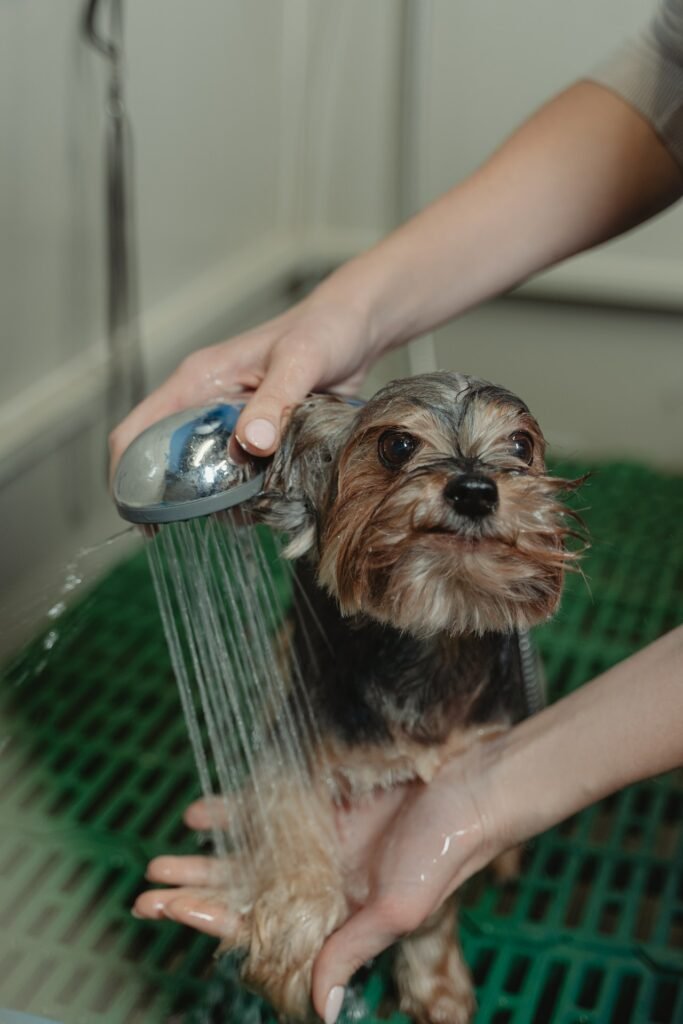
To minimize stress during grooming sessions and ensure a cooperative dog, it is essential to establish a good relationship between grooming and pleasurable experiences. Techniques that work well for this include reward-based grooming and gradual exposure.
Gradual exposure is a technique used to help a dog get used to and comfortable with being groomed by gradually introducing them to the tools and techniques. To do this, first show the dog the grooming equipment without using them, and then progressively introduce short grooming sessions and mild touches.
Giving rewards or praise during and after grooming sessions is a key component of reward-based grooming. This encourages the dog to link getting groomed with good things, which increases their willingness to cooperate and put up with the process.
Utilizing Calming Aids
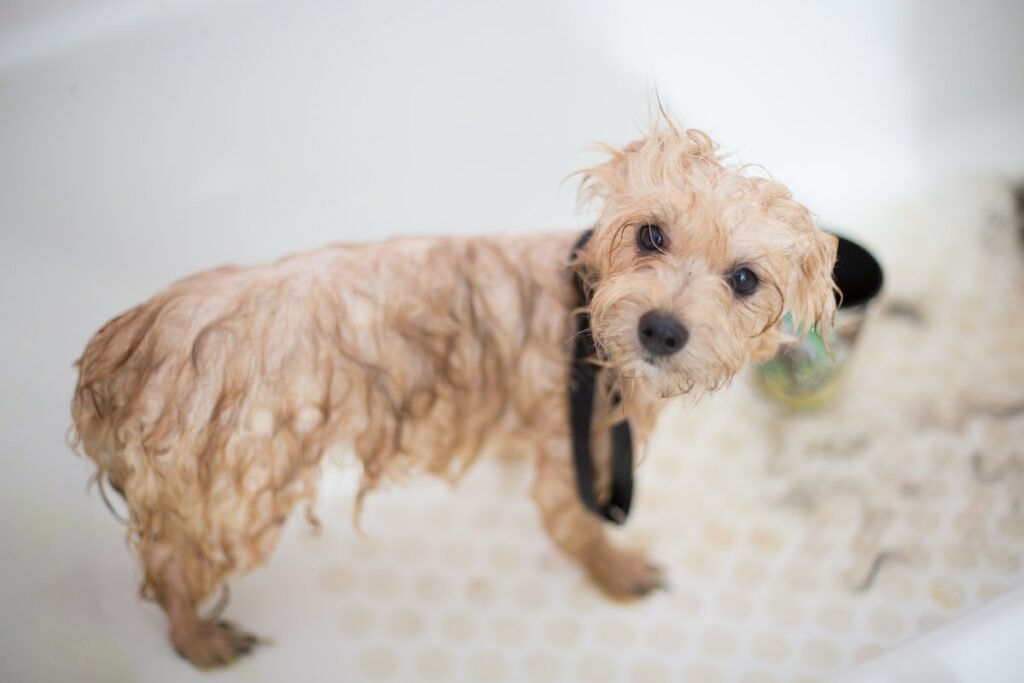
Dogs who use calming aids can experience substantial reductions in tension, anxiety, and behaviors associated with fear. Pheromones, pressure wraps, and natural supplements are safe and practical ways to help dogs in overcoming these difficulties.
Natural supplements with soothing qualities, such as L-theanine, chamomile, and valerian root, help ease anxiety and encourage relaxation. Dogs feel more at peace and secure when they utilize pheromone diffusers or sprays, which imitate the calming signals naturally generated by nursing moms.
Anxiety jackets and pressure wraps apply steady, mild pressure that helps ease tension and encourage relaxation. Dogs can feel more at ease and relaxed with the use of these soothing aids in other variety of scenarios, such as travel, thunderstorms, separation anxiety, and veterinarian appointments.
The Importance of Gentle Handling
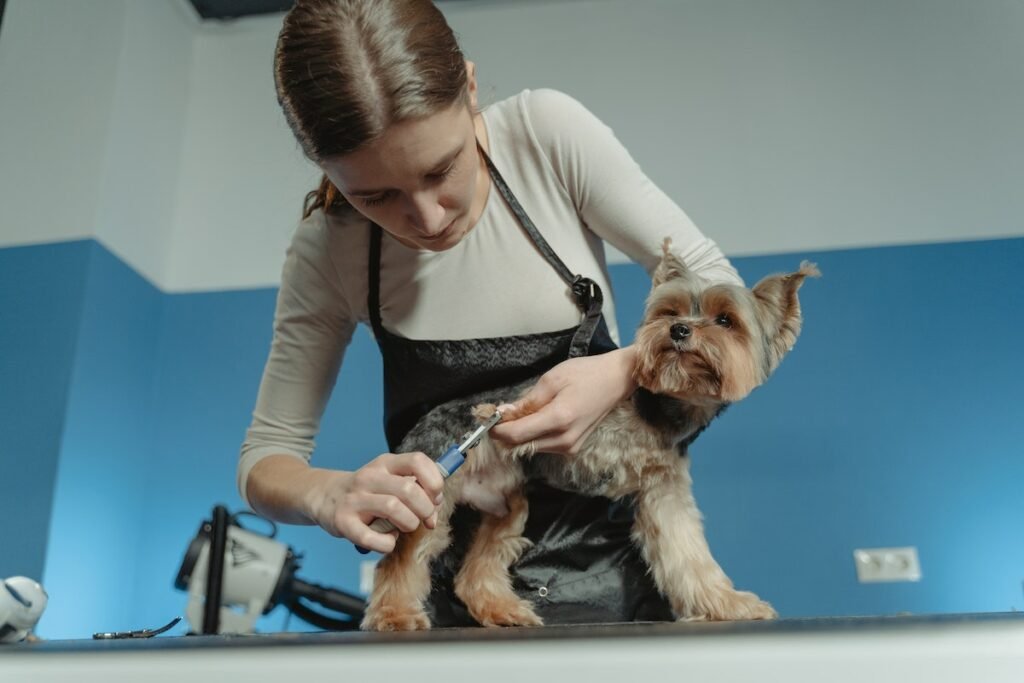
When dealing with anxious dogs, gentle handling is essential since it fosters trust, lowers tension, and stops additional worry. Slow, deliberate motions are used in this method, and startling or abrupt movements are avoided. Keeping a composed and easygoing attitude is essential while interacting with a nervous dog so that it can feel at ease with you.
Steer clear of direct eye contact since this could come out as menacing. Rather, pay attention to how comfortable the dog appears and read their body language. Keep your actions slow and soft, and avoid hovering over or confining the dog in a corner.
Give the dog enough room to back off or come over to you at their own leisure. Avoid applying pressure or patting the dog on the head when touching them, since this can trigger certain dogs. Instead, use soft, gentle strokes. Be mindful of the dog’s boundaries and avoid pressuring them into encounters if they appear unsure or uneasy.
Communicating with the Dog Groomer
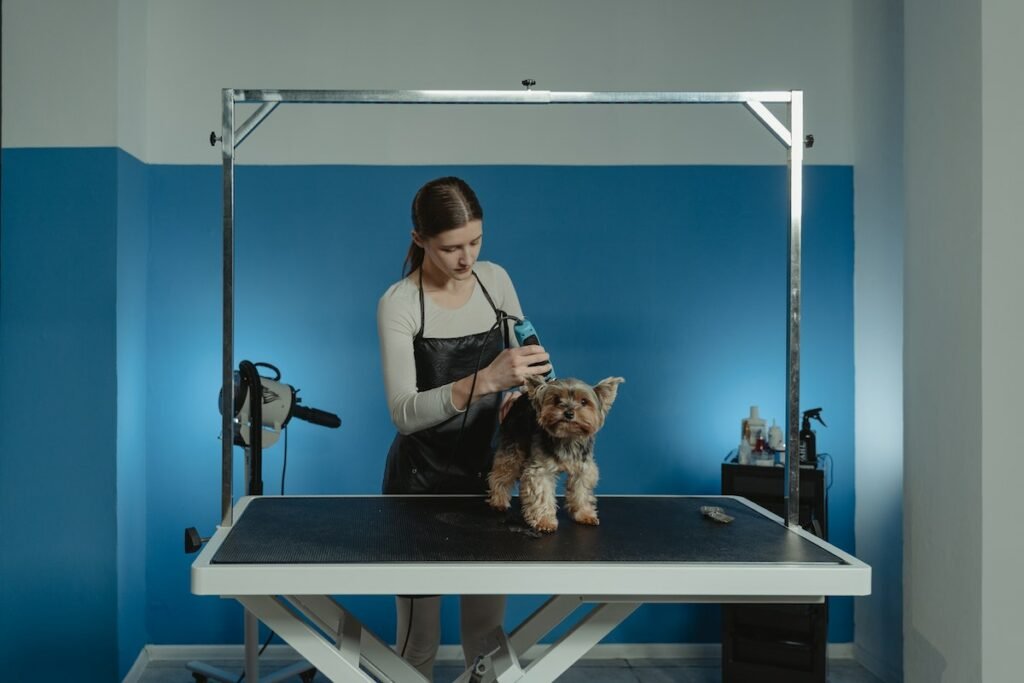
Maintaining a positive grooming experience for the animal and the pet owner alike requires effective communication between dog groomers and pet owners. Pet owners can communicate their grooming preferences, concerns, and any distinctive features of their dog by setting clear expectations and encouraging open communication.
This makes it possible for the groomer to customize their services appropriately, reducing miscommunication and guaranteeing the security and comfort of the dog. In addition to promoting trust and understanding between all parties, open communication enables pet owners to ask questions about the grooming procedure, the products used, and any possible health problems that might surface.
Furthermore, having an open line of communication makes it possible to provide feedback and make necessary adjustments during the grooming process, guaranteeing that the intended result is reached without compromising the dog’s well-being.
This collaborative approach not only improves the grooming experience, but also increases the connection between the pet owner, groomer, and their canine companions.
Wrapping Up
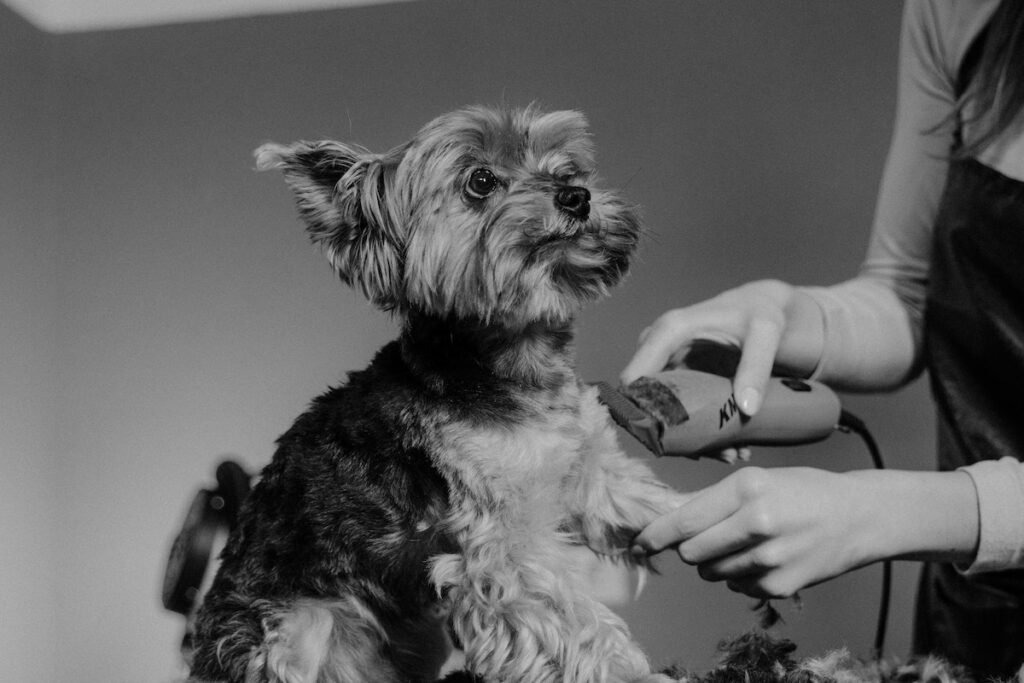
Ultimately, the key to reducing stress throughout the grooming process is by providing pet owners with practical techniques. Pet owners can dramatically lessen their pets’ anxiety by creating a good and comfortable atmosphere, sticking to a routine, and using gentle tactics. Understanding each pet’s unique demands and personalizing the grooming experience accordingly is critical.
Furthermore, creating a solid connection between the owner and the pet, as well as regular touching and socialization, can help build trust and make grooming less intimidating.
Using calming aids like pheromone sprays or soothing goodies can also help to create a more relaxing environment. By implementing such strategies, pet owners may turn grooming into a bonding experience that improves their relationship with their cherished pets while also improving their overall well-being.
Transform your pup with our professional dog grooming services in Fargo – book with Shaggy’s Dog Wash and Grooming now!

